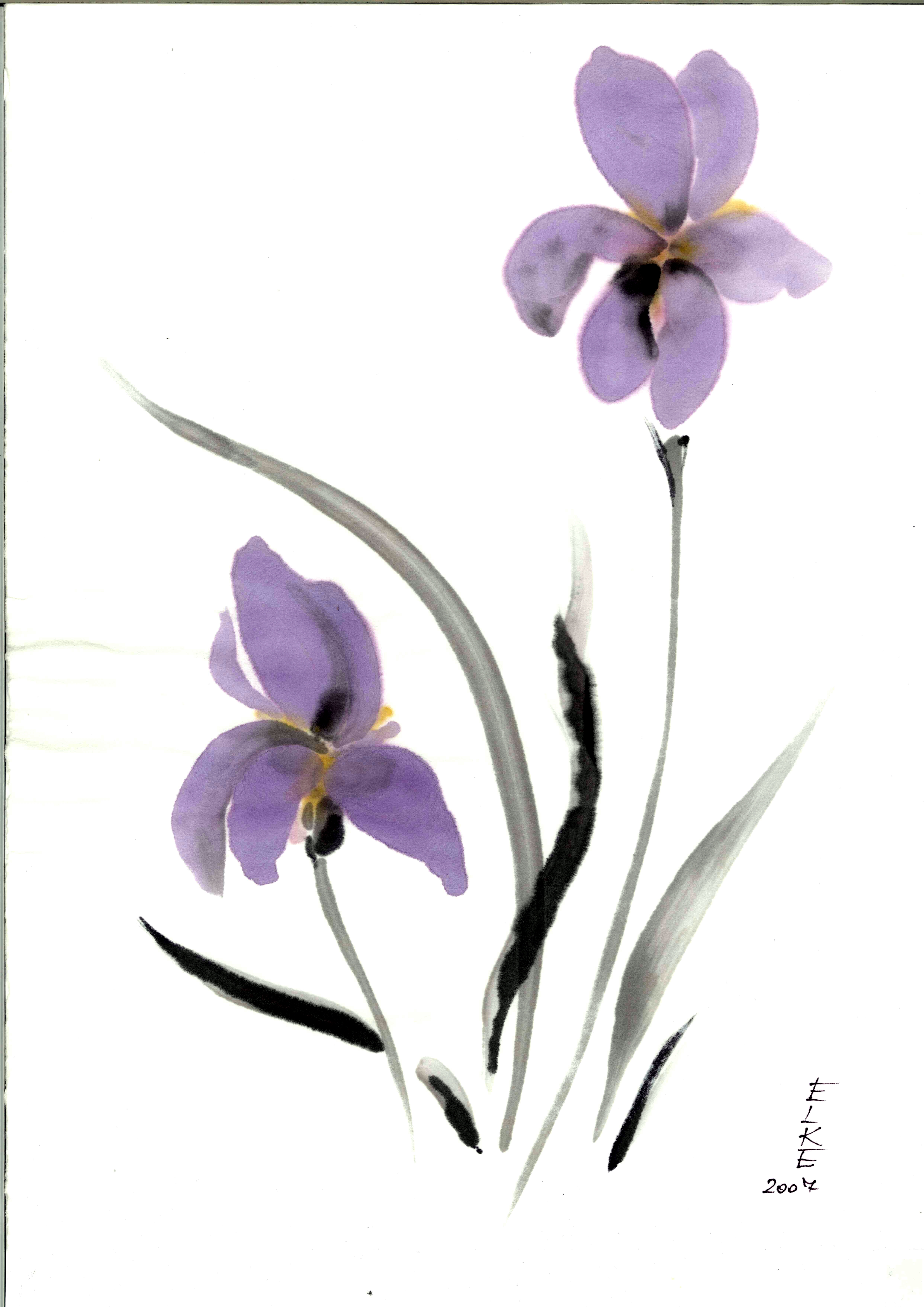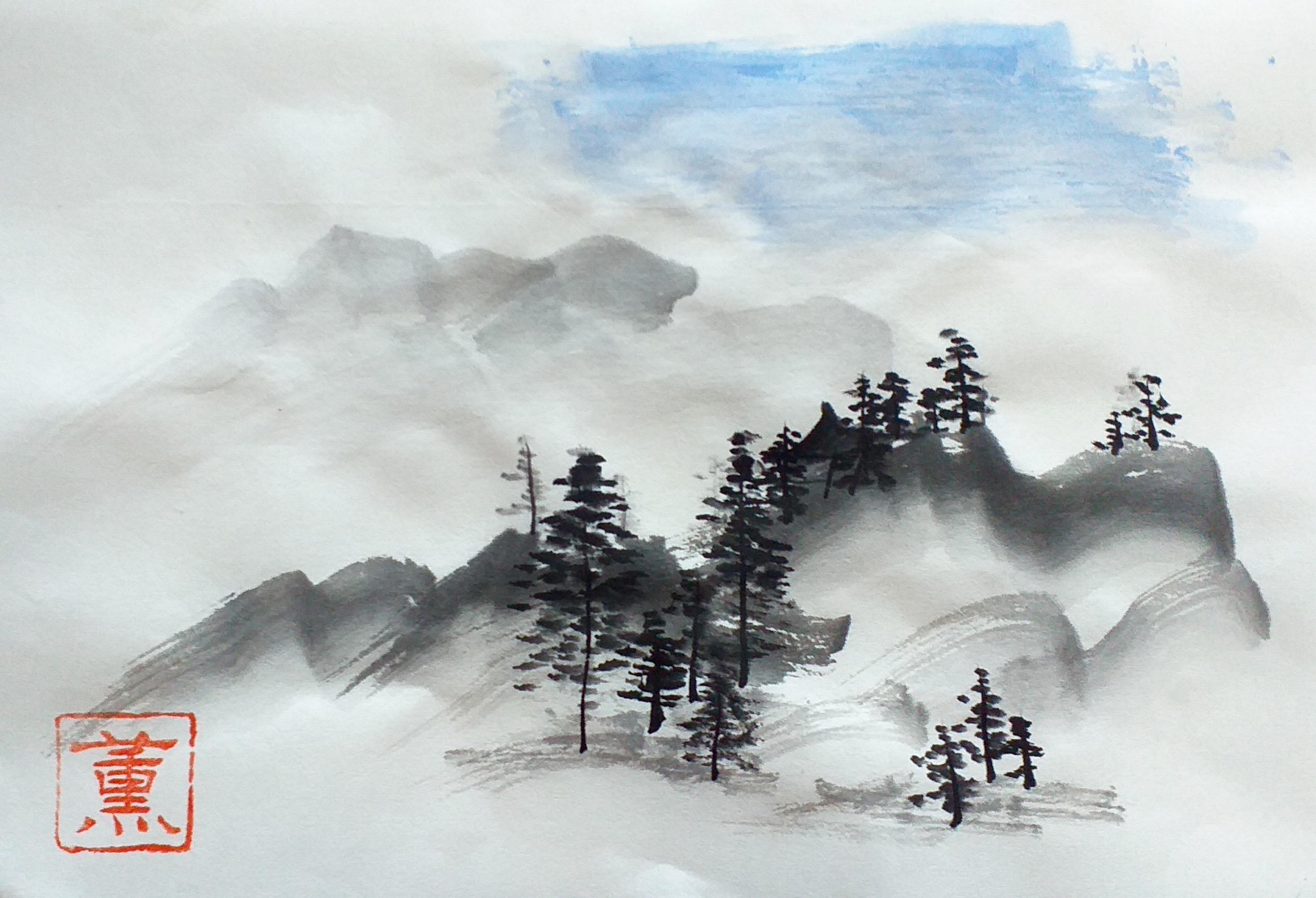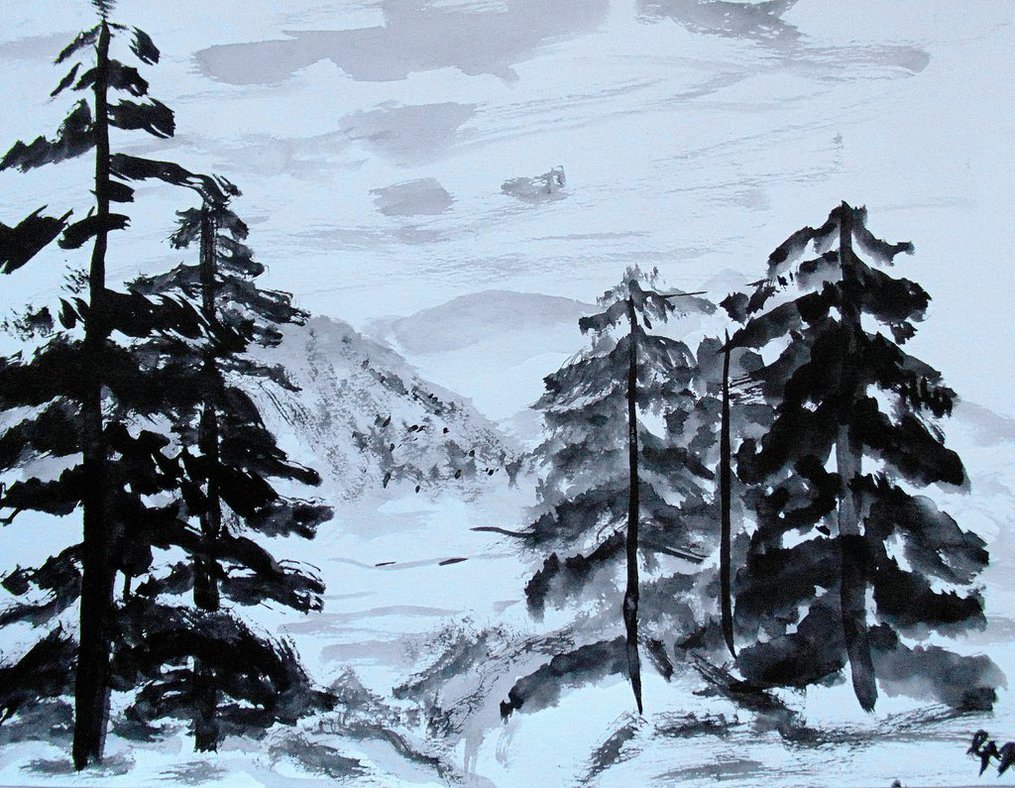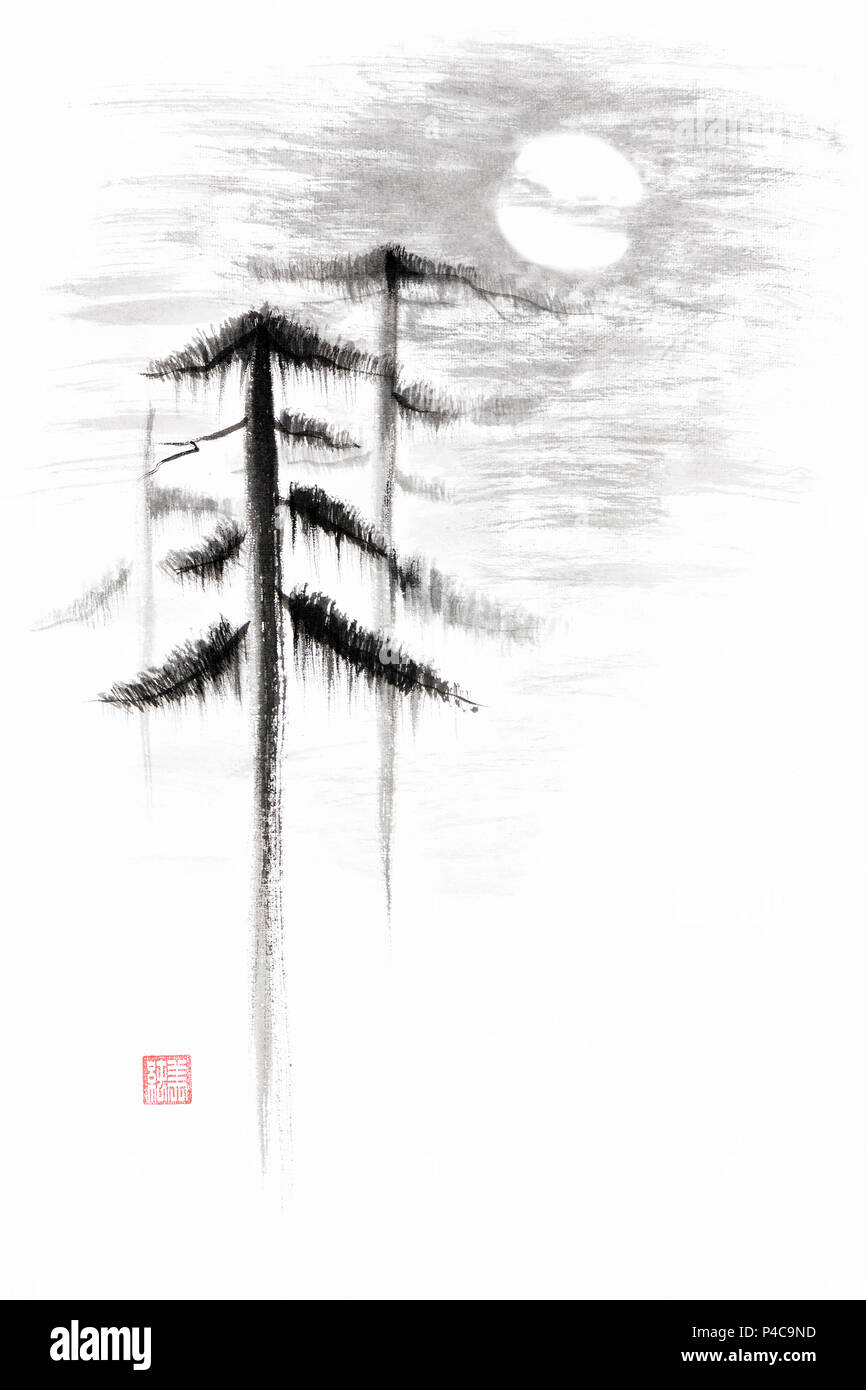
Iris Sumie Malerei Elke`s Galerie und Stadtführungen
Sumi-e wurde von Zen Mönchen aus China vor über 500 Jahren nach Japan gebracht. „Sumi" bedeutet im Japanischen schwarze Tinte und „e" Malerei. Diese Malerei ist die Kunst, Gegenstände oder Themen in Tusche mit einem chinesischen oder japanischen Pinsel zu zeichnen. Die unbemalten Flächen sind genauso wichtig, wie die in.
Katze, sumie Katze, Zeichnung, Sumi, Malerei von Marianne MarxBleil bei
sumi-e japanese painting. The artist Rita Böhm is practicing the asian art of sumi-e, the japanese painting, in Berlin, Germany. Rita Boehm gives an introduction to the art of sumi-e, the japanese painting. Sumi-e is often called chinese ink painting, the correct term however is japanese ink painting. There are many other terms for sumi-e as.

Japanische Kraniche Original Sumie Malerei von Storchpaar Etsy
Ink wash painting (simplified Chinese: 水墨画; traditional Chinese: 水墨畫; pinyin: shuǐmòhuà); is a type of Chinese ink brush painting which uses washes of black ink, such as that used in East Asian calligraphy, in different concentrations.It emerged during the Tang dynasty of China (618-907), and overturned earlier, more realistic techniques.

sumi e paintings Artist SAnn Ch'i
Erfahren Sie, was Sumi-E bedeutet, wie es sich von der Kalligraphie unterscheidet und welche Rolle es in der japanischen Kultur spielt. Lesen Sie auch, wie Sie Sumi-E lernen können und welche Künstlerin in Berlin Sumi-E Kurse anbietet.

Sumie japanische Tinte Malerei Mountain River Nebel Etsy.de
The art of Sumi-e is characterized by its minimalistic approach, Zen philosophy, and mastery of brushwork. The origins of Sumi-e can be traced back to the Tang Dynasty in China, where it was known as ink wash painting. This style of painting emphasized the use of black ink and water to create simple yet expressive images.
Katze, sumie Sumi, Malerei, Katze, von Marianne MarxBleil
Bambus, wilde Orchidee, Chrysanthemen und Pflaumenzweige werden in China und Japan als die „4 edlen Herren" bezeichnet. Jedes Motiv lehrt uns einen neuen Pin.

The flight of the heron The painting Zen or Sumie Japanische malerei, Monochrome malerei
Sumi-e: Die Kunst der Tuschmalerei. Die japanische Tuschmalerei Sumi-e wurzelt in der asketischen Haltung der Zen-Mönche und arbeitet mit den sparsamsten Mitteln. Mit der geschickten Handhabung der schwarzen Tusche entstehen atemberaubende Landschaften in verschiedenen Schattierungen. Der Japaner Tohun Kobayashi gehört mit Ausstellungen in.

Online Course of Sumie · Japanese Ink Painting · Kaoru Hirose
A quick Japanese style ink painting.

Japanische traditionelle SumieMalerei. FujiBerg, Sakura, Sonnenuntergang. Japans Sonne
Roslyn Levin has painted in sumi-e or Japanese brushstroke painting since 1976 and has been studying Japanese calligraphy since 2009. Her work is exhibited widely and is represented in corporate and private collections around the world. In sumi-e one moves with grace, strength, flexibility and balance, creating artworks steeped in tradition that are also at home in contemporary spaces.

B_Cose_il_Sumie_new_eng Sumie Sumi e painting, Japanese art watercolor, Japanese art
Das wahre Sumi-e. Der japanische Begriffe, „Sumi" bedeutet „schwarze Tinte", und „e" bedeutet „Malerei". Es kennzeichnet eine Kunstform, in der die Objekte in schwarzer Tinte, bis in alle möglichen Graustufen, die man durch deren Verdünnung mit Wasser erreichen kann, gemalt werden. Dies bedeutet jedoch nicht, dass jedes auf.

Drache.sumi e.tuschmalerei.tuschemalerei Tuschmalerei, Drache, Japanische bilder, Sumi e von N H
The art of Japanese Sumi-e painting is a captivating and unique form of artistic expression that has a rich history and deep cultural significance. This ancient art form, also known as ink wash painting, is characterized by its use of black ink, delicate and minimalist aesthetic. To truly appreciate the beauty and mastery of Sumi-e painting, it.

Sumi E Painting at Explore collection of Sumi E Painting
In diesem Video stelle ich euch den Sumi-e Maler Daniel Hammer vor. Ich habe ihn in seiner Galerie in Berlin besucht, um ihm einige Fragen zur Technik und Ku.

Abstrakte japanische Zen Sumie Malerei von hohen Pinien im Vollmond, orientalischen Stil
Sumi-e, or Japanese ink painting, has been practised in Japan since the fourteenth century, when Zen Buddhist monks from China brought over their own uses of ink. Japanese Sumi-e today harnesses the power of the line to combine bold brushstrokes with poetry, creating paintings in which each element is alive. Takumasa Ono has been the National.

Sumie and The Blues10x12 Watercolor on tag board Asian art, Art gallery, Flower painting
Erfahren Sie mehr über die Kunst des \"sumi-e\", die aus China übernommen und zu einer eigenständigen japanischen Kunstform wurde. Lesen Sie, wie die Künstler mit schwarzer Tusche und Pinsel die Essenz der Natur und des Wesentlichen darstellen.

Sumie japanisch Malerei Original einzigartig Vogel Etsy
Basic accessories. - Two water containers: one for cleaning the brushes and another to dilute the paint. - Ceramic palettes to mix the colors. - Small water spray bottle. - Masking tape - or alternative, to fix the paper. - Tissue or serviettes. - Hair-dryer to accelerate the paint drying process. Sumi-e materials.

Zwei Koi original sumie Malerei japanische Tinte auf Etsy
Poetry with subtle puns or double meaning. Fluid painting strokes that focus more on capturing the spirit of life than its photographic resemblance. Essential Tools for Japanese Sumi-e Painting - Brushes, Ink, Charcoal, Etc. Ink sticks typically consist of binchotan (charcoal), pine soot, or oil and are formed using animal glue.